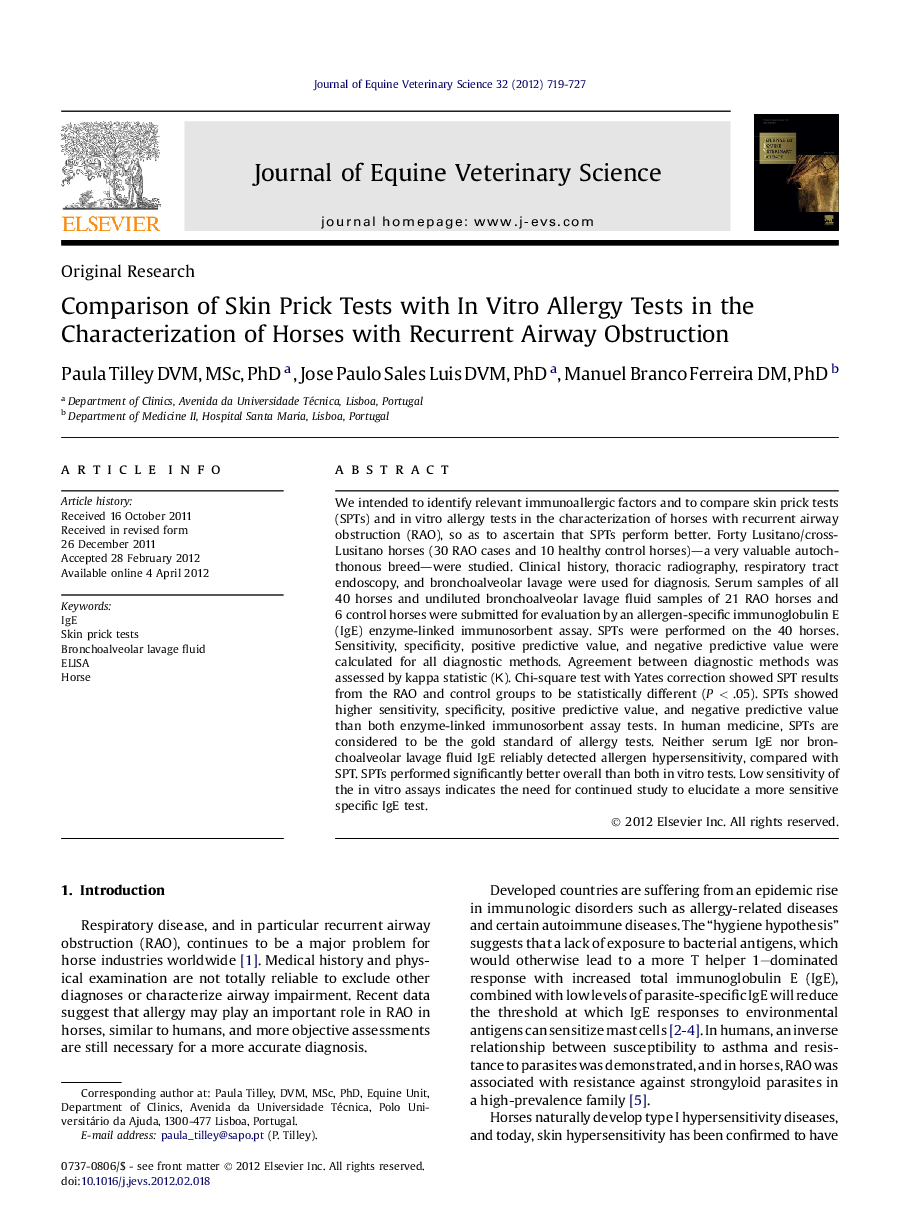| کد مقاله | کد نشریه | سال انتشار | مقاله انگلیسی | نسخه تمام متن |
|---|---|---|---|---|
| 2394989 | 1101543 | 2012 | 9 صفحه PDF | دانلود رایگان |

We intended to identify relevant immunoallergic factors and to compare skin prick tests (SPTs) and in vitro allergy tests in the characterization of horses with recurrent airway obstruction (RAO), so as to ascertain that SPTs perform better. Forty Lusitano/cross-Lusitano horses (30 RAO cases and 10 healthy control horses)—a very valuable autochthonous breed—were studied. Clinical history, thoracic radiography, respiratory tract endoscopy, and bronchoalveolar lavage were used for diagnosis. Serum samples of all 40 horses and undiluted bronchoalveolar lavage fluid samples of 21 RAO horses and 6 control horses were submitted for evaluation by an allergen-specific immunoglobulin E (IgE) enzyme-linked immunosorbent assay. SPTs were performed on the 40 horses. Sensitivity, specificity, positive predictive value, and negative predictive value were calculated for all diagnostic methods. Agreement between diagnostic methods was assessed by kappa statistic (Κ). Chi-square test with Yates correction showed SPT results from the RAO and control groups to be statistically different (P < .05). SPTs showed higher sensitivity, specificity, positive predictive value, and negative predictive value than both enzyme-linked immunosorbent assay tests. In human medicine, SPTs are considered to be the gold standard of allergy tests. Neither serum IgE nor bronchoalveolar lavage fluid IgE reliably detected allergen hypersensitivity, compared with SPT. SPTs performed significantly better overall than both in vitro tests. Low sensitivity of the in vitro assays indicates the need for continued study to elucidate a more sensitive specific IgE test.
Journal: Journal of Equine Veterinary Science - Volume 32, Issue 11, November 2012, Pages 719–727